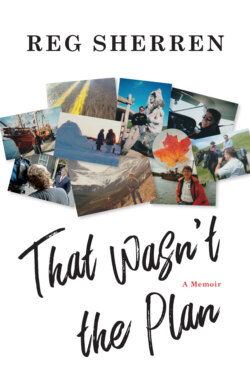Читать книгу That Wasn’t the Plan - Reg Sherren - Страница 22
На сайте Литреса книга снята с продажи.
Mining an Audience
ОглавлениеWithin a month, I was on the road anyway. A huge strike back in Labrador, in my hometown, was threatening the future of the area. The companies were demanding concessions, saying the steel industry was changing. New players were more competitive and driving down prices. The workers and their union did not want to budge.
I was assigned to produce a documentary—to try and find out the truth, no matter where it took me. It would take me to Labrador, Montreal, Northern Minnesota, New York and Pennsylvania, all in barely a week. I would be travelling with Ed Coady, the executive producer at the time, and camera operator Al Crocker.
Those two men were inclined to enjoy a drink on the road. Or two. After travelling to Montreal and Toronto we eventually arrived in the Big Apple. By the time we reached New York City, where I was to interview a Wall Street broker about a huge new Brazilian ore deposit that was undercutting the iron-ore industry in North America, I was feeling more than a little bit desperate. Call it trial by fire—or firewater.
Ed was my new boss, and I was hardly in any position to tell him what to do. Al, a burly longshoreman type, was just happy to be along for the trip. We got to Manhattan early in the afternoon. I had never been to New York City in my life. It seemed to breathe menacingly—a dangerous place. We stayed in an older hotel not far off Broadway. On the street outside, I remember the doorman saying to someone as he was helping them into one of those famous yellow taxis, “New York, New York … you know the best thing about New York? The road to the frickin’ airport!”
Our interview wasn’t scheduled until the next morning. Ed and Al found a nice bar downstairs in the hotel and we settled in. By five or six o’clock that evening, things were well along and we had moved to a small landing with a few tables at the top of a huge winding staircase that led down to the hotel lobby. Al said he wanted to change his pants and disappeared. Then Ed went off to the washroom.
After half an hour I went down to the washrooms, expecting to find Ed lying on the floor after being jumped by some New York ne’er-do-wells. He was nowhere to be found. I went back to my room, a gaudy shoebox with red-and-black-velvet wallpaper and about five deadbolts on the door.
At ten o’clock my hotel room phone rang. It was Ed. He was in a jazz bar in Greenwich Village and I had to come right down. He didn’t say why, but he was the boss. I reluctantly grabbed a cab, climbed some stairs and walked into what could best be described as a “joint.” The first thing I saw was a long bar down one side. I immediately spotted Ed at the corner of the bar. I also noticed that a) he was in a huge argument, and b) we were the only two white people in the entire room.
To say I was concerned would be more than an understatement. Yet by the time I had reached that bar, Ed had turned everything around and had everyone laughing and slapping each other on the back. It was one of his many talents.
I got him back to the hotel, and the next morning, as always, both Ed and Al were right on time. The interview confirmed my research. The iron-ore industry was indeed being turned upside down. We had one more stop. We had to drive out to Bethlehem, Pennsylvania, headquarters of Bethlehem Steel, a big player in the iron-ore industry in Labrador. Much of the iron ore mined there wound up in Bethlehem.
On the radio on the drive out, the news reports were full of the Gary Hart scandal. Hart was considered the frontrunner for the Democratic presidential nomination in 1988—that is, until he got caught having an extramarital affair with a woman named Donna Rice. Stories about his dalliances with the woman on a yacht named Monkey Business were everywhere. I didn’t realize it at the time, but what we focused on in the business of “news” was already starting to shift.
The steel plant was massive, a flat steel rolling mill that stretched on for kilometres. It was in trouble, with huge layoffs and more coming as it struggled to compete with cheaper, offshore steel producers. The owners no longer felt obligated to buy from places like Labrador if they could get a better, more competitive price on iron ore somewhere else.
Over lunch, the fellow showing us around, a mountain of a guy named Bubba, said, “That’s just the American way, survival of the fittest. Change or die.” He also took the time to pass comment on the situation Gary Hart had found himself in. Said Bubba, “You know, I think the biggest mistake Gary Hart made with Donna Rice was he should have got Teddy Kennedy to give her a ride home.” I wasn’t sure if he was kidding or not. If he was, it was American political humour at its darkest. (If you don’t get it, do an internet search on Teddy Kennedy and the Chappaquiddick incident.)
We flew out that afternoon and on the taxi ride to JFK, I remember thinking, “This is the best thing about New York—the road to the frickin’ airport.” It would not be the last time journalism would carry me there.
When the story aired, I was told both the iron-ore company and the steelworkers broke their negotiations to watch the documentary. It was almost nineteen minutes long, half the entire supper-hour show. Within a day they had settled.
